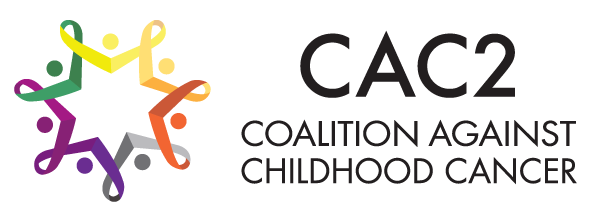By CAC2 Member Bob Piniewski, People Against Childhood Cancer The recent post on the National Cancer Institute’s Pediatric Cancer Research and Pediatric Cancer-Related Activities Report discussed NCI’s response to a direct statement from Congress saying “intensify pediatric cancer research” and a direct question from Congress asking for a report “on the actions it has taken to implement the research-specific portions of the Caroline Pryce Walker Conquer Childhood Cancer Act“. NCI essentially replied…”we’ve got it covered” and was commended by Congress.
I respectfully disagree. Until no child dies from cancer and the cure does not cause significant long-term health effects in survivors — we do not have it covered. So, to further prove our point, let’s look at NCI funding in another way. What follows is a comparison of NCI funding dollars to the number of Person-Years-Life-Lost (PYLL) for the top killer cancers of adults (excluding lung cancer) and childhood cancers. PYLL is calculated by subtracting the average age of death in the US (72) from the average age of diagnosis for each cancer, and represents the years of life lost for each cancer.
This is what NCI says about it: “Death rates alone do not provide a complete picture of the burden that deaths impose on the population. Another useful measure that may add a different dimension is person-years of life lost (PYLL)—the years of life lost because of early death from a particular cause or disease. PYLL caused by cancer helps to describe the extent to which life is cut short by cancer. On average, each person who died from cancer in 2007 lost an estimated 15.4 years of life.” (Person-Years of Life Lost) Here’s how you calculate PYLL: The average age of diagnosis for childhood cancer is 6. Therefore, each death after five-years (age 11) from childhood cancer represents a loss of 61 years of productive life (72-11=61). The average age at diagnosis for breast cancer is 61 and each death after five years represents a loss of 6 years of life (72-66=6). For prostate and colo-rectal cancer, the average age of diagnosis are 68 and 71, respectfully. Therefore, the average death after five-years from these cancers would occur at ages 73 and 76, after the average age of death in the US. So, it is impossible to calculate the average years of life lost for prostate and colo-rectal cancer, because the average death from those cancers occurs past the average age of death in the US. However, to allow a conservative comparison of the years lost and funding, the average age at diagnosis was used and subtracted from the average age of death to determine the years life lost for each cancer. The years life lost is then multiplied by the number of deaths ‘expected’ five-years after diagnosis to determine the total PYLL for each cancer. The total PYLL is then divided by the NCI funding amount to arrive at the dollars per PYLL for each cancer.
Below find the 2009 data (links are to NCI data) for the two leading causes of death for adult males and females (excluding lung cancer) and childhood cancers. The data shows that:
- Prostate cancer receives over $10,000 per year life lost, even though the average age of diagnosis is 68 and 97% of those males survive five-years, which is beyond the average life span for males.
- Colo-rectal cancers receive nearly $5,000 per year life lost, even though the average age of diagnosis is 71, meaning on average each case would only live one year.
- Breast cancer, with 275,000 total life years lost, receives $599.5 million, or $2,172 per year life lost.
- Childhood cancers, with 205,008 total life years lost, receives $192.8 million, or $940 per year life lost.
Breast cancer 275,000 life-years-lost. Childhood cancer 205,008 life-years-lost. That is what Dr. Eugenie Kleinerman – Head, Division of Pediatrics, M. D. Anderson Cancer Center means when she says: “Curing childhood cancer is the equivalent of curing breast cancer in terms of productive life years saved.” Further discussion of Person-Years-Life-Lost can be found at “Lies, damn lies and statistics” which does the same comparison (with similar results) for funding from the American Cancer Society. We have a simple national tragedy of funding for cancer research in the United States of America when it comes to protecting our children.


